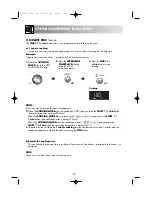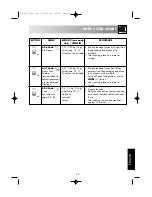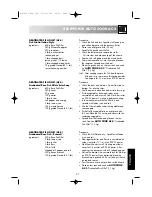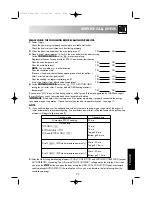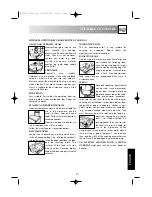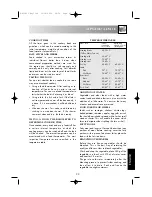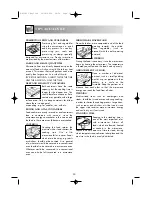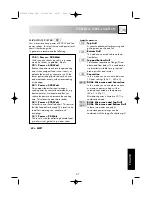
32
SUITABLE OVENWARE
TIPS AND ADVICE
UTENSIL SUITABILITY TEST
If you are not sure whether your utensil is suitable
for use in your microwave oven, carry out the
following test: Place the utensil into the oven. Place
a glass container filled with 150 ml of water on or
next to the utensil. Switch on the oven at 900 W
power for 1 to 2 minutes. If the utensil stays cool or
just warm to the touch, it is suitable. Do not use this
test on a plastic utensil. It could melt.
SUITABLE UTENSILS FOR COMBINED
OPERATION
In general all heat-resistant microwave utensils are
also suitable for combined operation. However you
should be aware that the hot air or the grill makes
the crockery very hot. Plastic utensils and film are
therefore not suitable.
BEFORE YOU START....
To make it as easy as possible to use the microwave
oven we have put together a few hints and tips for
you. Only switch on the oven when the food is
already inside.
SETTING THE COOKING TIME
Defrosting, re-heating and cooking times are
generally much shorter than in a conventional oven
or hob. So you will need to consult this book for the
recommended cooking times. It is better to set
shorter rather than longer cooking times. Always
test the food after the cooking time has elapsed. It
is better then to continue cooking it for a little
longer, than to have overcooked food.
STARTING TEMPERATURE
Defrosting, re-heating and cooking times depend
on the temperature of the food when you start. For
example, deep frozen and refridgerated food will
need longer than food that is at room temperature.
Standard storage temperaturs of food are assumed
for re-heating and cooking times (refridgerator
temperature of 5° C, Room temperature of
approximately 20° C). For defrosting food a
starting temperature of -18° C is assumed.
Do not cook
eggs
in the
unbroken shells. Pressure builds
up inside the shell and this may
result in the egg exploding.
Do not heat
oil or fat
for deep-
frying inside the microwave
oven. It is impossible to control
the temperature of the oil and it
may suddenly splash out of the
pan.
Do not heat
sealed containers
such as jars or tins. The pressure inside the
container could cause the container to explode.
(The exception is when you are making preserves).
SUITABLE UTENSILS FOR CONVECTION
AND GRILL OPERATION
When cooking with convection and grill, without
microwave mode, you can use the same utensils
you would use for any conventional oven or grill
cookery.
Ovenproof glassware is very suitable for
convection and grill operation and also Heat-
resistant china. Pottery is generally very suitable
provided that it is glazed. Metal baking trays, tins,
clips, skewers and aluminium foil can be used as in
conventional ovens. Roasting bags can be used in
convection mode. They are not suitable for use
under the grill. Please note the maximum
temperature stated on the packaging. Pierce the
bag several times with a fork on the upper surface
of the bag.
R-82FBST English 26/08/2004 08:56 Page 32



